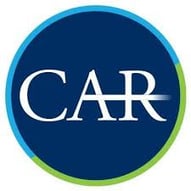 EV charging made headlines during the last week of September as the US saw initiatives to improve charging infrastructure on multiple fronts. There were also numerous investments on behalf of automakers in various plants, mainly concerning the shift to electrification. Finally, we review the latest vehicle sales numbers and outlook for the year.
EV charging made headlines during the last week of September as the US saw initiatives to improve charging infrastructure on multiple fronts. There were also numerous investments on behalf of automakers in various plants, mainly concerning the shift to electrification. Finally, we review the latest vehicle sales numbers and outlook for the year.
As microchip shortages and other supply chain struggles continue to plague the industry, we have migrated all news updates related to supply chain disruptions to our website. You can stay informed on the various supply chain issues affecting the global auto industry here.
If you missed the previous Hot Topics email, you can read it here.
We would love to hear from you and welcome your questions at any time. If you're interested in sharing your thoughts with us on hot topics, or if you would like to ask us a research question, please reach out to Sara Bozer.
Hot Topics of 10/3/2022
EV Charging
- Federal money is now headed to states for building up fast EV chargers on highways
- Hertz, BP team up to build EV charging network
- It's common to charge electric vehicles at night. That will be a problem.
- EV charge points in Britain are now nearly as expensive as gasoline, research shows
My thoughts:
One of the challenges facing EV adoption in the US is getting some traction as federal funding has been released to states for charging station deployment. Installation of DC fast chargers along interstate highways will be prioritized, providing some range anxiety relief to early adopters. Of course, it is not simply a matter of installation, as any charge-seeking driver has experienced the disappointment of arriving at a charging station only to find it inoperative. Maintenance and upkeep will be essential. We're seeing signs that the private sector is also getting on board with charging station deployment – see Hertz-BP arrangement. I expect many other private companies to follow as EV sales grow.
Another challenge is the potential stress on the national electric grid, referenced in a recent Stanford study. Today, utility companies incentivize home charging at night. But renewable energy, such as solar, provides energy during the day. As demand grows, I expect the market to settle into incentivized regional and climate-specific rates. Just as the technology for batteries and charging stations will evolve, our grid capacity and storage/delivery systems will improve.
I recently discussed the other challenges that lie ahead in the shift to electrification, including charging infrastructure, in an opinion piece with the Detroit News. I welcome Hot Topics readers to view the article HERE>>>.
Plant Investments
- Ford investing $700 mln in Kentucky truck plant, adding 500 jobs
- GM to invest $760M in Toledo propulsion plant to make important part for EVs
- Details emerge on $2.4 billion EV battery plant in West Michigan
- GM to invest $491 million at stamping facility to support EV production
- EV market share in Southeast doubles as industry brings almost $33 billion to the region
Automotive investment in the US continues to pour in as OEMs and suppliers prepare for new model launches. Investment primarily focuses on EV and battery production but includes some plants that can produce parts for both EVs and ICE vehicles. Both Ford and GM are investing in existing plants that will preserve or, in some cases, increase jobs. Investment in Michigan by Chinese battery supplier, Gotion, will provide new jobs in western Michigan, while the Ohio and Indiana investments are for retooling existing plants to supply parts for new EVs.
Investments in the Southeast US are growing faster than in the Great Lakes region, with commitments from major OEMs in Tennessee, Georgia, and Alabama. EV market share in the Southeast is lagging compared to other areas of the US, but is now beginning to crack the 5% level, frequently cited by analysts as an inflection point. Look for states to continue to develop proposals for tax incentives and infrastructure enhancement to lure additional investment.
CAR researchers track plant investments such as these on a monthly basis with the CAR Book of Deals. The CAR Book of Deals is available to ACP Members and Affiliates as a program benefit. If you'd like to learn more about either program and the benefits, please reach out to Sara Bozer.
Vehicle Sales and Outlook
- U.S. new vehicle sales to increase on strong demand - report
- Supply Constraints, Lack of Inventory Cap US Light Vehicle Sales in September
- Cox Automotive Lowers Full-Year New-Vehicle Sales Forecast as September Volumes Hold Steady at Low Level; Q3 Sales Nearly Equal to 2021 Levels
- EV Tax Credits to Spur More Vehicle Sales Are Entering a Critical Phase
- EV sales to hit all-time high in 2022, IEA says, but more work needed to put world on net-zero path
My thoughts:
September vehicle sales have increased over the prior year but will underwhelm for seasonally adjusted annual rate (SAAR). Parts shortages continue to constrain supply as OEMs allocate available parts to high-profit vehicles: pickup trucks and SUVs. EV sales continue to grow, setting sales records each month. The US content requirements set forth in the Inflation Reduction Act (IRA) for EV tax incentives are being studied as OEMs plan for supply chain changes. And OEMs continue to invest and partner with battery suppliers to secure future EV battery production, which is currently viewed as a potential bottleneck to supply.
CAR recently held the Annual Fall Forecast and Outlook Briefing for ACP Members and CAR Affiliates, featuring speakers from CAR, OESA, and Cox Automotive. To learn more about access to the presentation and other ACP/Affiliate Program benefits, please reach out to Sara Bozer.
 Best Regards,
Best Regards,
Alan Amici
President and CEO
Center for Automotive Research
|
|
|
|
|
|
|
















